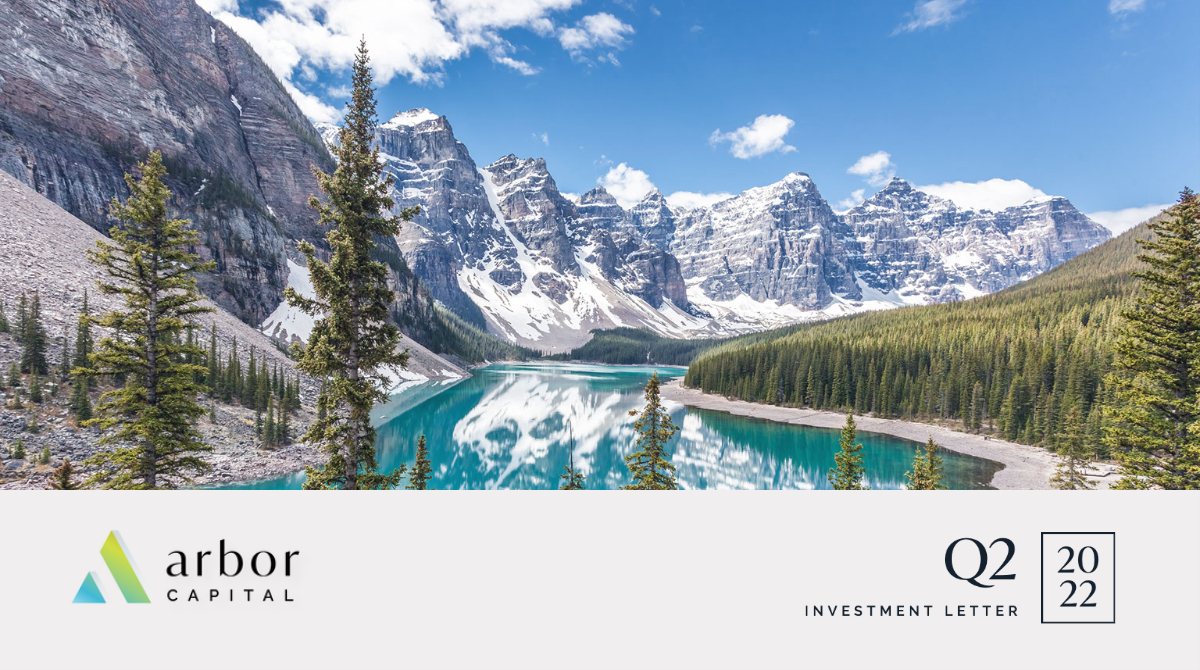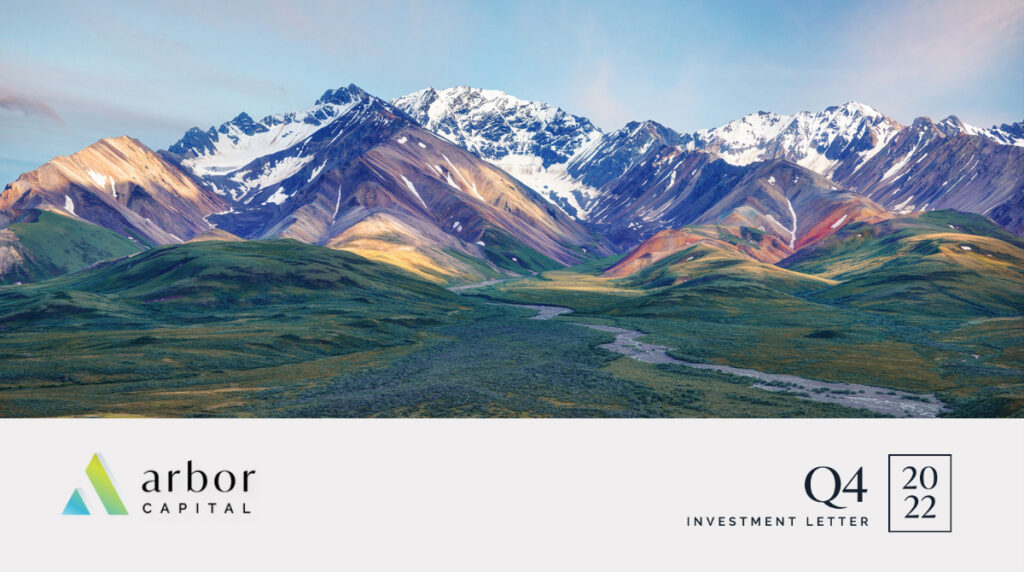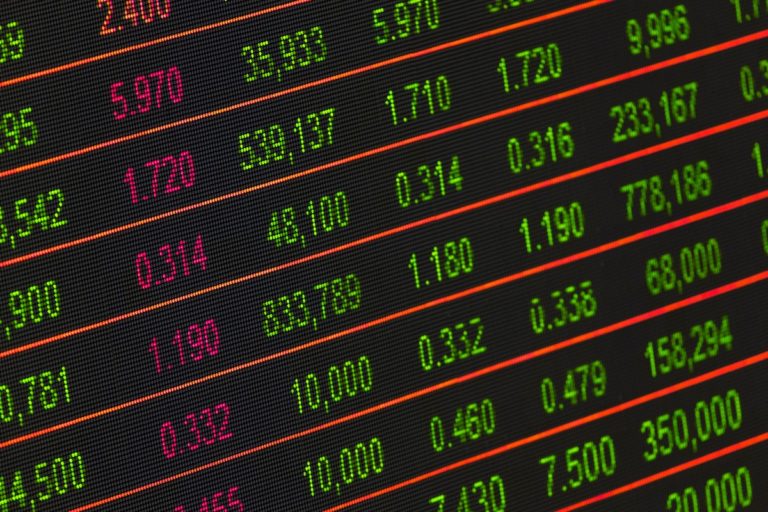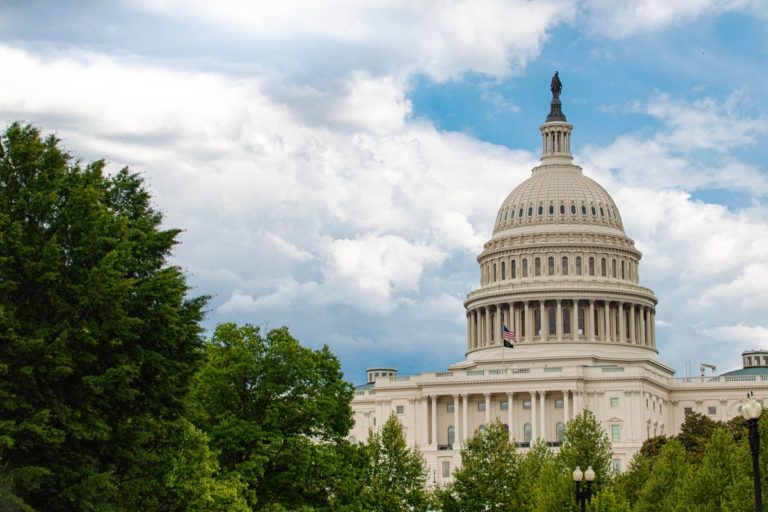The December quarter saw volatility again. A rally in equities started right at the beginning of October through November, only to see a sharp decline again in December. The bond markets continued a decline that began in September and continued through mid-November. The bond markets then rallied into December.
The Federal Reserve continued steady aggressive increases in interest rates though those are looking to slow now. While inflation is clearly on the decline, we are starting to see the impact of higher interest rates and inflation ripple through the economy. As reflected by data from the St. Louis Federal Reserve, consumer loan activity related to credit cards and other revolving plans is sitting at an all-time high. The St. Louis Federal Reserve also provides economic data related to personal savings rates which are at all-time lows. So we now expect to enter the portion of the credit cycle with rising losses on lending related to consumer activity for things like housing, auto, and credit card lending. The question is how high could loan losses for consumers go. Commercial and business lending loan losses will also increase as part of this cycle.
The average 30-year mortgage is currently 6.33% as measured by the St. Louis Fed while the monthly supply of new houses is 8.6 months compared to 6.2 months this time last year. Cancellation rates for new home construction with the largest U.S. homebuilders have surged. Semiconductor manufacturers discuss weak end markets for smartphones and PCs. One industrial distributor whose stock we own has commented end markets have softened for those companies with products closest to consumers. Companies such as Microsoft, McDonald’s, Meta (Facebook), Alphabet (Google), Amazon, and Salesforce are among many beginning layoffs.
Europe continues to deal with significant levels of inflation and a long-term problem of providing energy to its people. The continent has seen a fairly warm winter which helps energy supplies in the short-term but does not help their long-term issue of diversifying its energy sourcing. China’s zero-covid policy has come to an abrupt end with spending to come which will probably mirror somewhat the spending surge in the U.S. on things like travel and experience, especially outside China. China also continues its aggressive posturing towards Taiwan.
In summary, the financial markets are continuing to correct and nothing moves in a straight line. Companies last quarter started to lower earnings expectations and we expect that trend of lowering earnings guidance to continue in 2023. Valuations for stocks have been falling for some companies but not all. Valuations for real estate, individual bonds, and bond funds have also seen declines.
Last quarter, we noted we were watching for something to “break.” We are still watching, as is the Federal Reserve. Once they are done increasing interest rates will they hold rates steady, or start to lower them? The Federal Reserve is also engaged in “quantitative tightening” and the shrinking of its balance sheet, which became bloated after buying US Treasuries and government-sponsored mortgage-backed securities to help reduce interest rates and encourage lending. Will the Fed continue or halt quantitative tightening? Federal Reserve actions may impact both the equity and bond markets materially in 2023.
As a fiduciary, Arbor needs to make sure your money provides for the things you need. The reality is there are changes in the economy that may not matter to you until your specific circumstances change. Discussion with your investment advisor may be a prudent course of action, especially if a financial plan needs to be adjusted during these turbulent times.
We would like to highlight some recent news and its impact on our strategies, as well as thoughts on what could lie ahead.
Arbor Capital Management: Wealth Strategies
Fixed Income Market
Arbor was pleased with its fixed-income strategies across the board. The changes made in late 2021 had the intended effect of managing risk in what we expected to be a rising rate environment during 2022. Did we expect the worst bond market in recorded US history? No. Nonetheless, our active managed strategies meaningfully outperformed that bond aggregate index after fees and are positioned now to potentially generate over 5% income for 2023.
Our passive strategies actually suffered greater declines for most clients than our actively managed strategies but as we own the underlying bond/CD/treasury we can largely cast a blind eye towards this. Generally, holders of the bond/CD/treasury will receive full value back at maturity and collect interest along the way. With fixed income (bonds) how you hold your investment is nearly as important as what you own. This feature of how we manage your fixed income allocation was never more important than it was last year.
Equities
The equity markets surged in October and November, only to sharply fall in December.
Within Global Brands – Value, energy, and consumer staples’ names continued to outperform. Industrials and financials lagged in terms of performance. Value was a long-time laggard relative to growth. This is the second straight year value that has outperformed growth. In early 2023, we are looking to increase the number of companies in this strategy with two U.S.-based oil and natural gas producers.
Within Global Brands – Growth, there was a reversal of roles. Two speculative technology companies we own that outperformed in the September quarter subsequently underperformed in the December quarter due to production ramp issues. However, we saw sharp outperformance in two China-based companies we have long owned which are recovering as Covid restrictions are lifted. Large-cap tech continues to lag in terms of performance. We have also exited two growth companies we owned for nearly three years as we sought to redeploy those dollars toward U.S. oil and gas producers.
Valuations are still expensive for many companies in our Global Brand – Growth portfolio. Most stocks in Global Brands – Value is reasonably priced. For investors holding cash intended for equity purchases, we continue to invest more in the Value strategy than the Growth strategy. Hopefully, in 2023, valuations will come down to enable us to buy more shares at lower prices of all the growth companies we continue to like.
Real Estate Investment Trusts (REITs)
REITs were one of the worst-performing asset classes of 2022. As you’ve noticed from previous writings, when you have nearly a year of rising interest rates, it is no surprise that REITs performed poorly in the short term. Historically speaking, REITs have rebounded well following periods of such poor performance. If interest rate increases by the Federal Reserve do pause or begin declining, 2023 could be a strong year for REITs. Past performance is no guarantee of future performance. Long-term allocators should be viewing this as an opportunity.
Alternative Investments
This strategy performed well in 2022 as it ended up uncorrelated to the financial markets. Both our managed futures fund and commodities fund outperformed. Investments related to merger arbitrage, S&P options trading, non-agency mortgage, and gold have also held up on a relative basis. One important change is we exited the Grayscale Bitcoin Trust ETF. It sharply declined this year, but the reason for the exit was the financial uncertainty surrounding the parent company Digital Currency Group (DCG). A separate business segment under DCG called Genesis has run into significant financial and legal difficulties. The risk of contagion and an unknown impact on the Grayscale Bitcoin Trust under a potential bankruptcy scenario led us to exit the position.
We do not have any new information related to an additional distribution for those clients who held IQDNX. However, we are filing paperwork for clients as part of a class action lawsuit and there may additional news to come. Any class action lawsuit along with settlement arrangement will not impact additional distributions to be received. If you have questions related to an investment in the Infinity Q Fund which was frozen in 2021, please contact us.

Arbor Digital
While our alternative strategy performed well overall in 2023, Digital Assets continued to behave like risky tech stocks in Q4. What we didn’t expect for this last quarter was the outright fraud that was FTX and Sam Bankman-Fried. The downfall of FTX lead to further contagion across centralized entities most notably with Digital Currency Group and Genesis. This caused extreme selling pressure and brought digital asset markets to new lows in November with BTC hitting a year-low of $15,990. In Q3 ETH saw a rally from all-time lows in June of $980 all the way back up to $1,986 only to fall back down to $1,109 in November after FTX. While we feel we are at, or close to the bottom, there are still more narratives to play out. The SEC has multiple enforcement actions and investigations into the firms highlighted above, as well as others, that will continue to put pressure on digital asset markets to start off 2023.

The silver lining is this has created significant opportunities for digital asset investors heading into 2023. The FTX collapse has nothing to actually do with decentralized blockchain technology which we invest in through Arbor Digital. Crypto is not dead, quite the contrary. In the long run, this extreme washout of bad faith actors, centralized entities with poor risk management, and over-levered trading firms is the healthiest thing to have happened. We remain encouraged that the enforcement actions mentioned above, coupled with sensible proactive regulatory proposals, will lead to meaningful regulation of digital asset markets in 2023.
Our investment thesis remains strong, and we will continue to help investors engage with digital assets safely and securely following a disciplined process. In our view, Digital Assets remain one of the most significant investment opportunities since the early days of the internet.
We always encourage you to talk with your investment advisor if you have questions about your financial goals, how our wealth strategies may help shape those goals, or if your tolerance for risk has changed.
Q3 2022
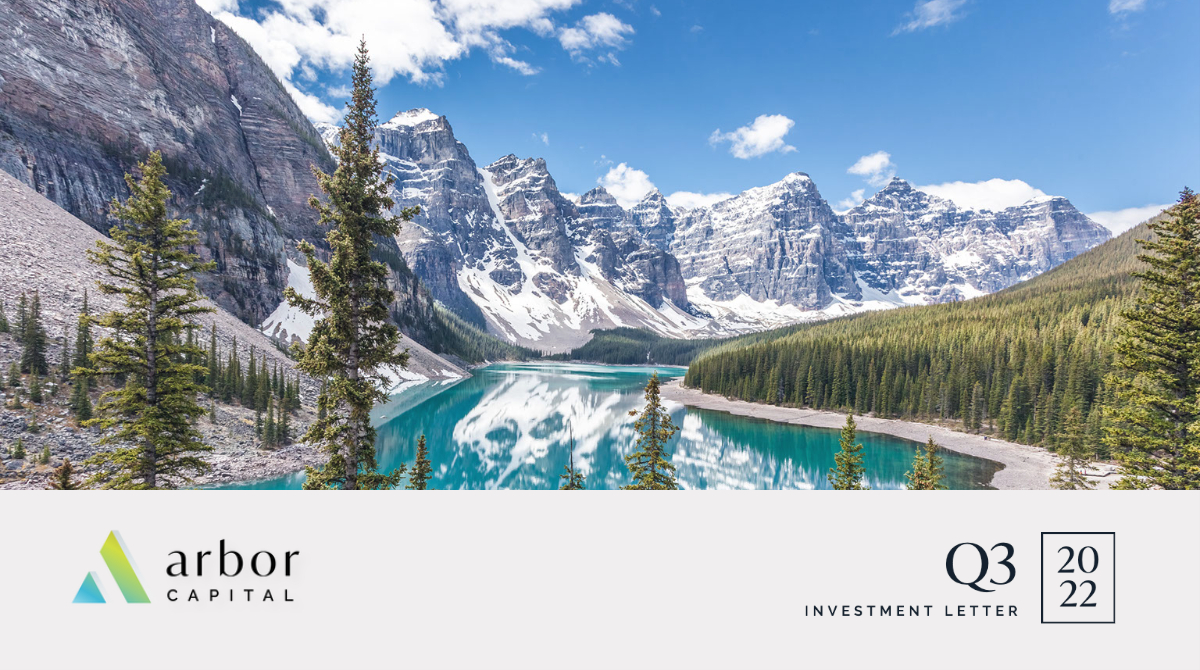
Q2 2022
